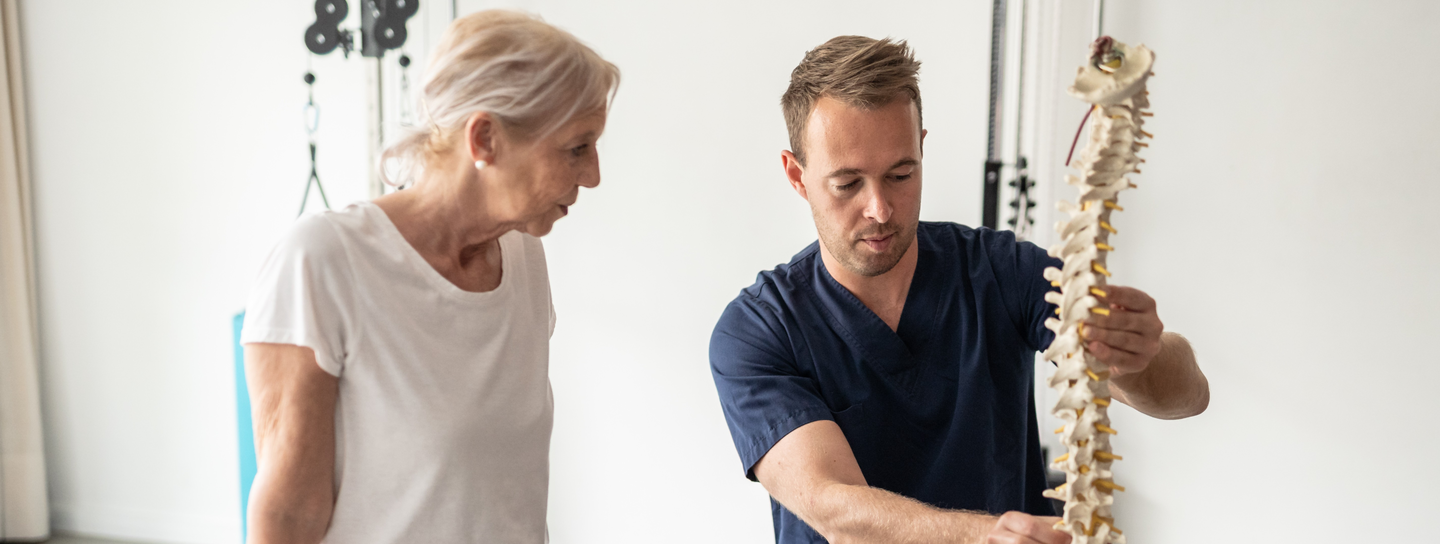
About the Back and Spine



The spine is made up of 33 bones:
The spinal cord is protected by these vertebrae, which are separated by vertebral discs. Damage to the vertebrae or discs can cause compression to the spinal cord or the nerve roots exiting the spinal cord. Compression can result in radiating pain, numbness, weakness, or paralysis.
Ankylosing spondylitis is a disease that causes inflammation of the joints between the vertebrae. Affected vertebrae can eventually become fused together. Pain and stiffness are typically worse during periods of inactivity. Activity or exercise will often provide pain relief.
Degenerative disc disease refers to the normal degeneration of spinal discs with age. Spinal discs provide shock absorption for the spine. The breakdown of these discs over time results in a loss of fluid, decrease in flexibility, and cracks or tears in the discs. These changes are most common in the lower back and neck. People who do heavy physical work, smoke, or are obese are more likely to have symptoms of degenerative disc disease.
Facet joint osteoarthritis is the occurrence of arthritis in the back portion of the vertebrae. The loss of cartilage in this region results in more friction and as a result, more stiffness and back pain.
Foraminal stenosis occurs when there is a narrowing of disc space resulting in pressure on one or more nerve roots. This condition is usually characterized by the slow development of pain, usually associated with activity. This pain is usually not continuous but can be very limiting.
Herniated disc is a medical condition that results in the inner portion of a disc bulging beyond the outer ring of a spinal disc. This most commonly occurs in the lumbar spine (lower back) where symptoms include radiating pain, numbness, and weakness in the lower extremities. The second most common location for a disc herniation is the cervical spine (neck). When this happens, patients experience arm pain that can be accompanied with numbness, tingling, and muscle weakness.
Osteoporosis of the spine is a disease that results in the weakening of the vertebrae. Osteoporosis literally means “porous bone.” Vertebrae become less dense, weaken, and are prone to fractures that may require surgical intervention.
Spinal cord trauma is damage to the spinal cord that may result from direct injury to the cord itself or indirectly from damage to surrounding bones, tissues, or blood vessels.
Fractures of vertebrae can cause bone fragments to pinch and damage the spinal nerve roots or the spinal cord. Most spinal fractures occur from trauma but also develop due to weakened bone from osteoporosis or osteoarthritis. Depending on how severe a fracture is, patients may experience pain, difficulty walking, or be unable to move their arms or legs (paralysis). Many fractures heal with conservative treatment; however, severe fractures may require surgery to realign the bones.
Spinal stenosis is the narrowing of the spinal canal. When this occurs, the spinal cord or nerve roots are often compressed, causing numbness, pain, and weakness to the surrounding area. Spinal stenosis occurs most often in the lumbar (lower back) and cervical (neck) regions.
Spondylolisthesis is the displacement of a vertebra in relation to the vertebrae below it, either anterior (forward) or posterior (rearward). When this happens, the disc between the vertebrae becomes flattened and the spinal cord is compressed, resulting in numbness, pain, and weakness. The areas of the body affected depend on the location of displacement.